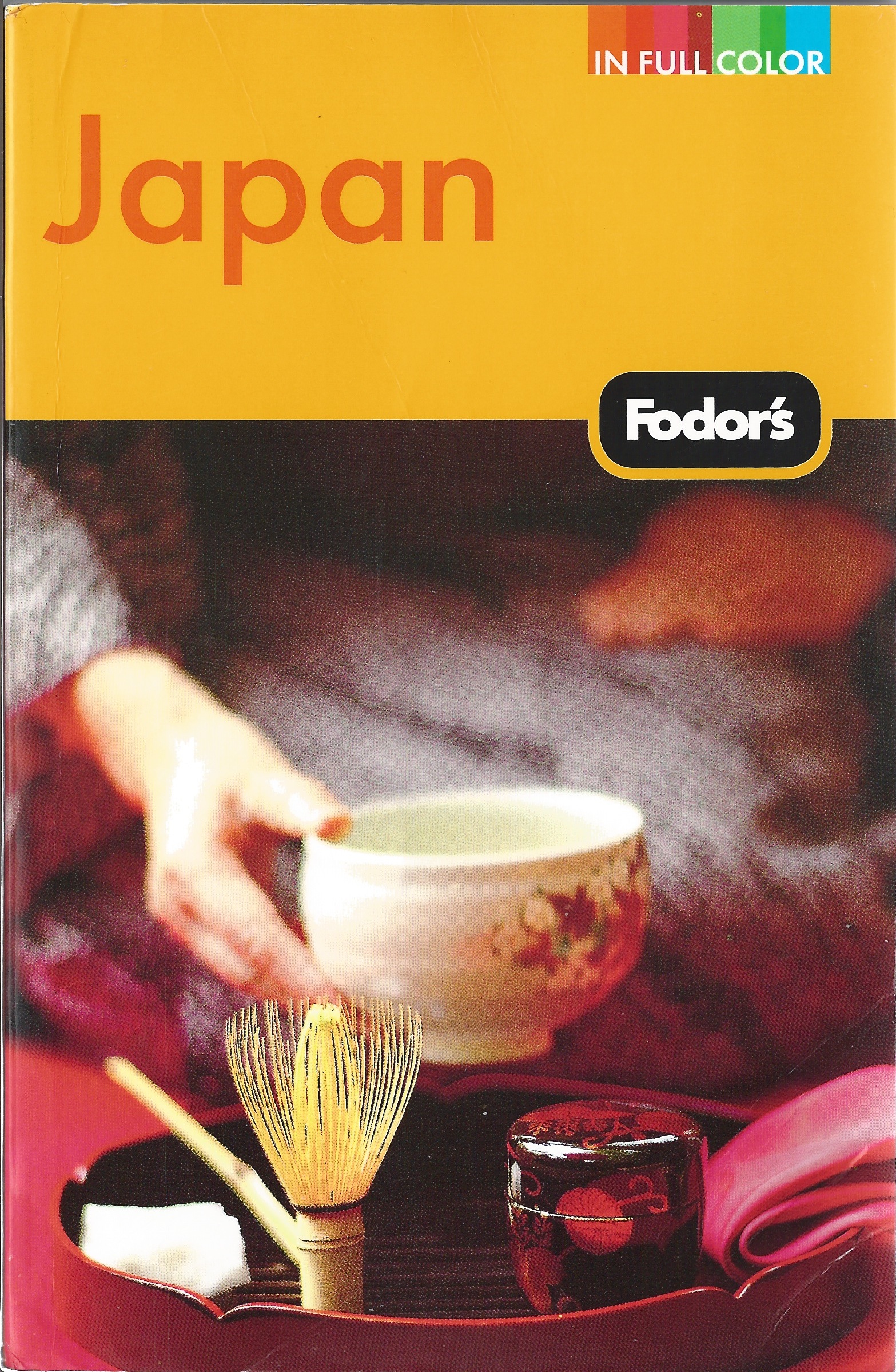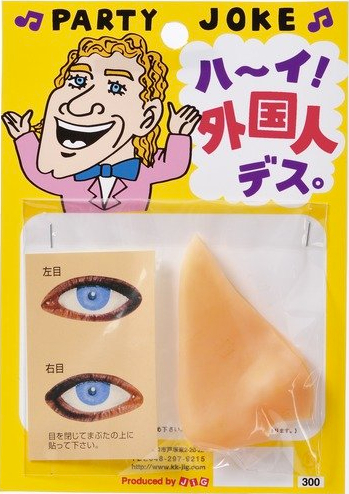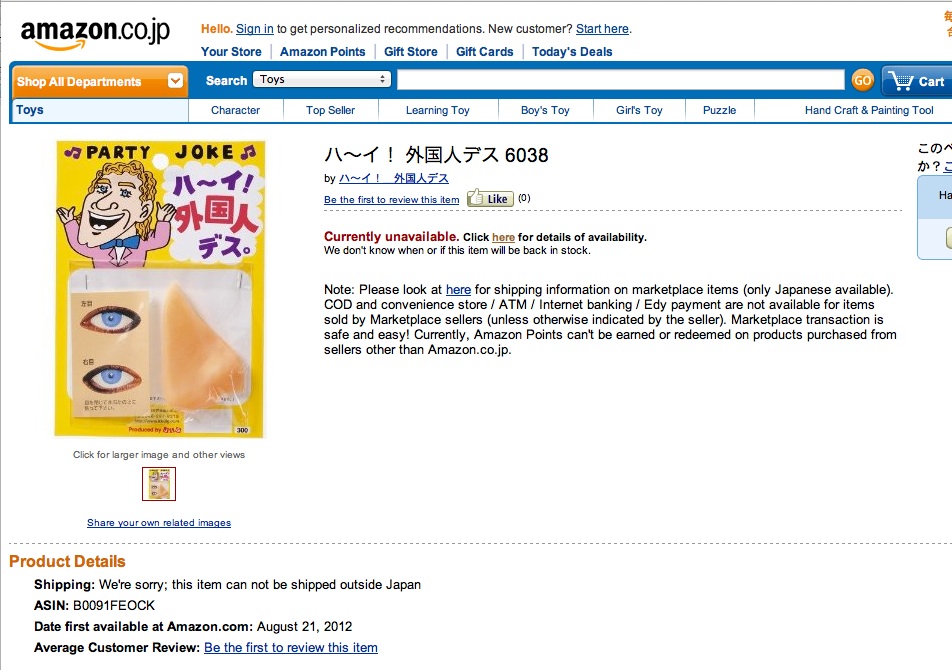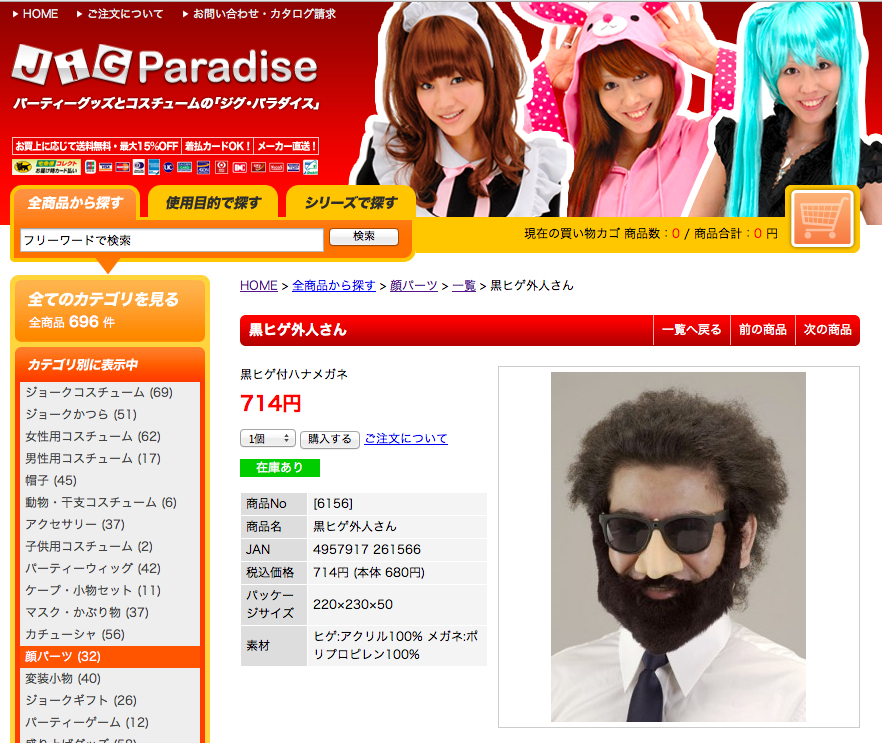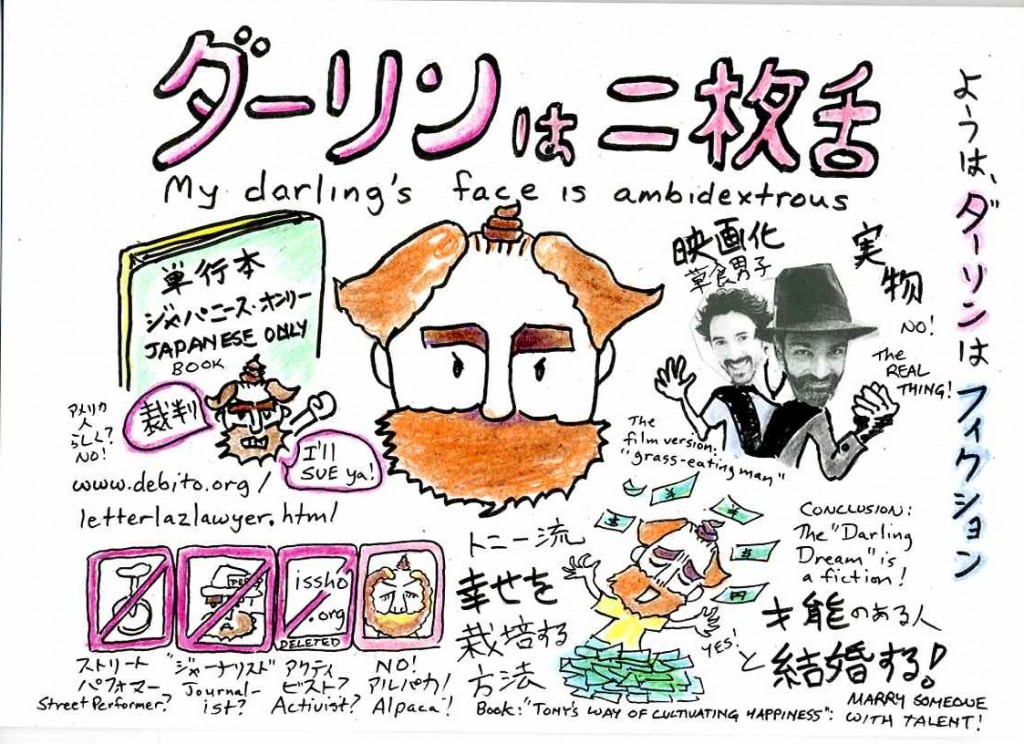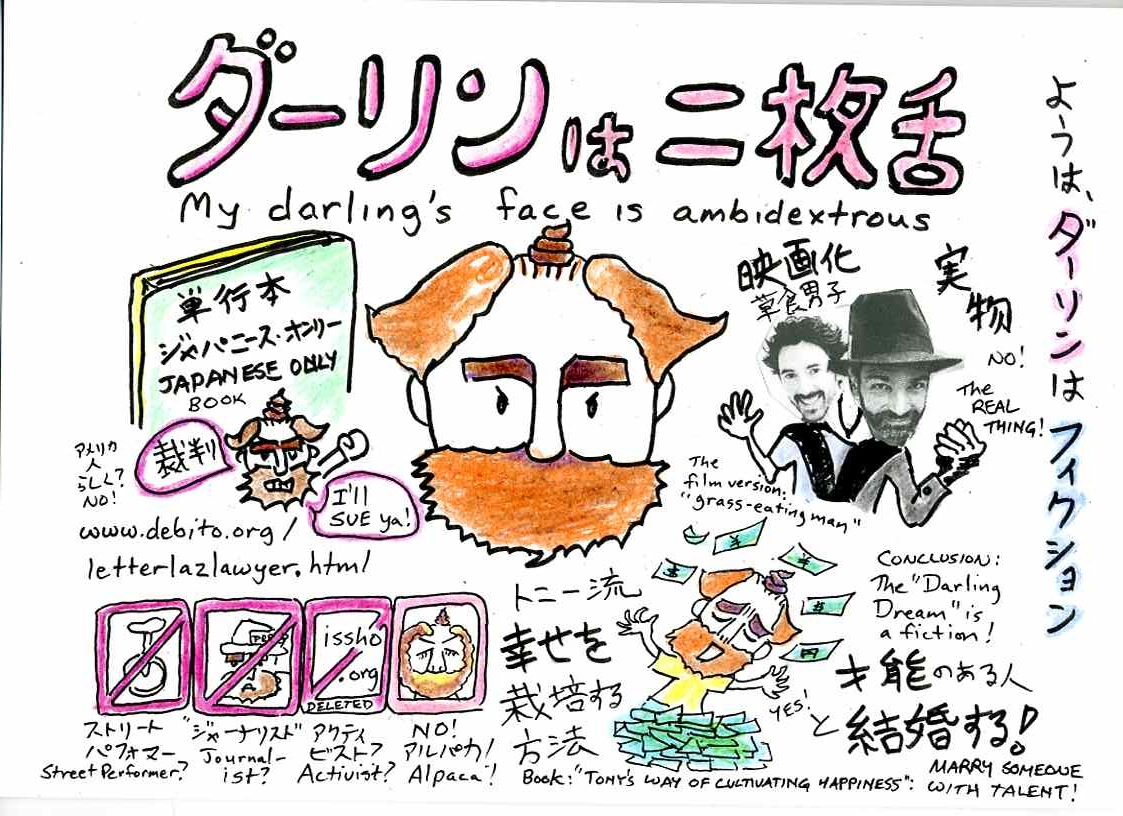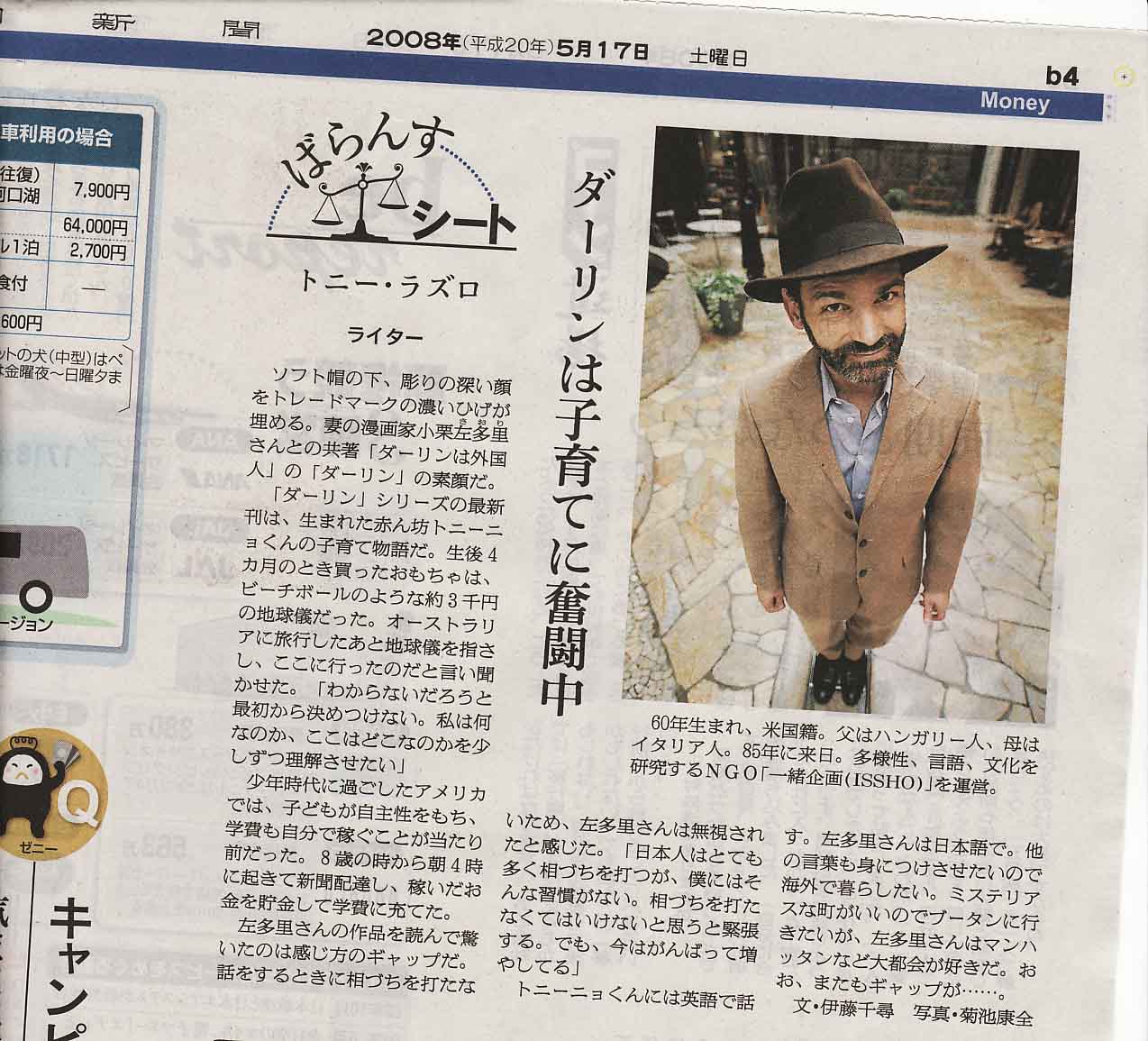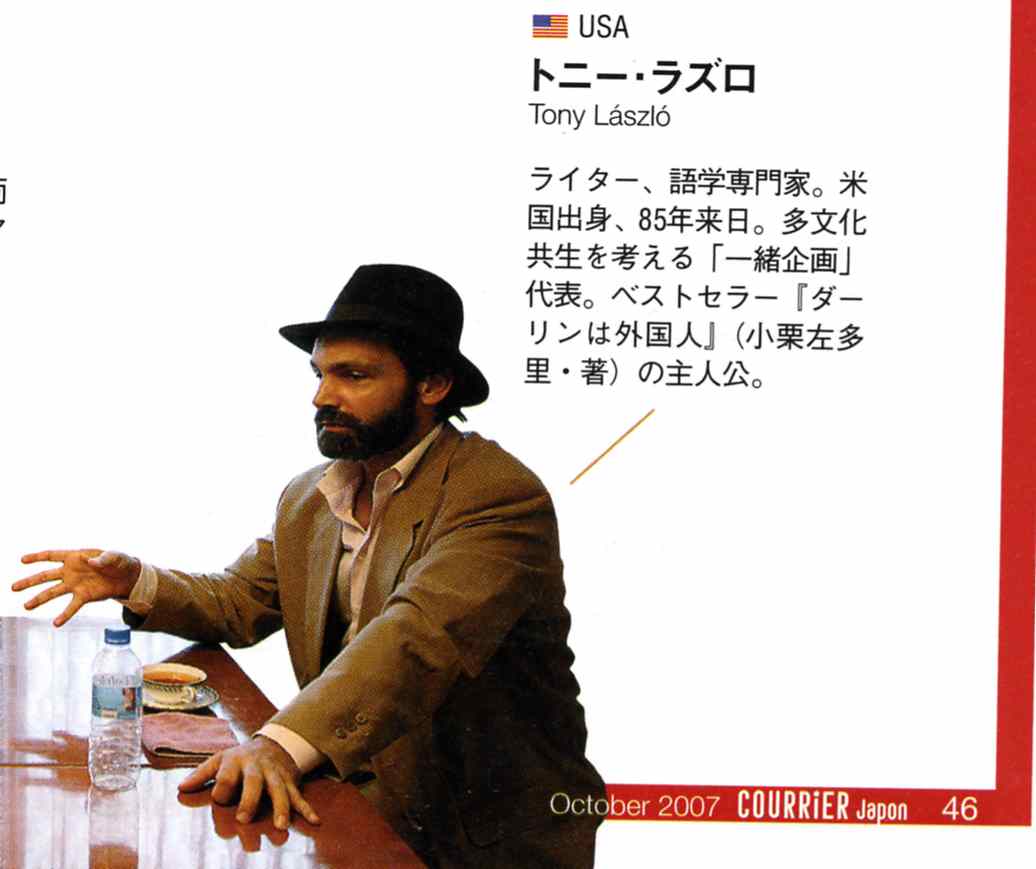mytest
Hello Blog. Got some great news regarding some unfinished business over a decade old:
FORMER NEWS STATION ANCHORMAN KUME HIROSHI APOLOGIZES
FOR AN ANTI-“GAIJIN” COMMENT HE MADE TEN YEARS AGO
THANKS TO THE ISSUE BEING ARCHIVED ON DEBITO.ORG
This post is structured thusly:
///////////////////////////////////////////////////
1) BACKGROUND TO THE ISSUE
2) KUME’S LETTER OF APOLOGY
3) MORAL: ARCHIVES SHOULD NOT BE DELETED
(CONTRAST WITH THE DELETION AND SUPPRESSION OF HISTORY
ON TONY LASZLO’S ISSHO.ORG)
///////////////////////////////////////////////////
December 7, 2006
BACKGROUND TO THE ISSUE
I realized the value of a maintaining an archive all these years, when I got a letter out of the blue last Friday night (Dec 1) from a certain individual named Kume Hiroshi.
This is significant. Kume Hiroshi is a very influential person–for more than a decade he was Japan’s most popular (and controversial) news anchorman, hosting NEWS STATION on the TV Asahi network throughout the 1990’s. Much of his controversy stemmed from his glib editorial comments about news during the broadcast, found caustic or offensive by some viewers.
One thing that friends and I found offensive was his flippant use of the word “gaijin”, already becoming a “housou kinshi gotoba” (word not for broadcast, at least officially) on the networks at the time.
A gaffe he made in October 1996, questioning the efficacy of “gaijin” speaking fluent Japanese, caused a huge debate on mailing lists such as the Dead Fukuzawa Society and ISSHO Kikaku (both now moribund). It also occasioned my seminal essay on why “gaijin” is in fact a racist word (https://www.debito.org/kumegaijinissue.html).
Anyhow, this was one of the first human-rights issues ever I took up publicly in Japan, becoming a template for how to use “proper channels” for protest. Now, ten years later, those efforts have finally come to fruition!
What happened back then in more detail: On October 17, 1996, I emailed the following letter to TV Asahi (Japanese original):
============ MY 1996 LETTER TO TV ASAHI BEGINS =================
To Mr Kume Hiroshi:
(opening salutations deleted) On Monday (10/14)’s News Station broadcast something happened which troubled me. In the middle of a broadcast from India about the Maharaja burger in McDonald’s, some Indian apparently spoke very good Japanese.
But after that, Mr Kume apparently said:
“But it’s better if foreigners talk broken Japanese, right?”
(shikashi, gaijin wa nihongo ga katakoto no hou ga ii)
What does this mean? Maybe this was no more than an offhand comment, but I am greatly troubled. The next day, it became an issue on the the Fukuzawa internet group, and some “foreigners” felt very uncomfortable. The reason why was because foreigners both inside and outside Japan [sic] have taken great pains to become bilingual, and even if they try to fit into Japanese society, is it good for you to tell the whole country that “after all, it’s better if they remain unskilled like children”?
And then, I called TV Asahi directly and was connected to a gentleman at News Station. After I explained the above, he [replied]:
“‘Baby talk’ isn’t a bad word, I think. It’s just you who thinks so”, among other things. In other words, it seems he doesn’t take seriously the opinions of his viewers.
Even after I asked him, he wouldn’t give me his name, nor would he write down mine. “I’ll tell him” was all he said. But I really don’t have the confidence that he will pass the word along, so I am sending you this directly by email.
Afterwards, I called TV Asahi again and got hold of the Shichousha Center and talked to Mr Sekimoto. He said friendily, “That won’t do” and “I’ll talk to News Station”. However, that was around noon and I haven’t heard anything from them, so I don’t know what happened.
Anyway, Mr Kume, couldn’t you please take care of your terminology when addressing people who aren’t Japanese? If you take care about how you talk about Burakumin [Japanese Underclass], Zainichi Kankokujin [Japan-born Koreans], and “cripples” (bikko), please also do the same for the “gaijin”. (closing salutations deleted)
============ 1996 LETTER ENDS ======================
https://www.debito.org/kume1.5letterenglish.html
Japanese original at:
https://www.debito.org/kumeltrnihongo.html
https://www.debito.org/nihongo.html
(The entire issue, related articles, and the debate on Fukuzawa is archived at
https://www.debito.org/activistspage.html#kume)
The issue then took off, hitting the Washington Post and the Daily Yomiuri twice. Finally, on November 28, News Station devoted an 11-minute segment on the word “gaijin” itself (a digression from the real issue of the “appropriateness” of their fluency–see my write-up of the telecast at https://www.debito.org/kume5tvasahibroadcast.html).
Alas, Kume topped the whole thing off by calling the reporter who anchored the story, award-winning novelist Dave Zoppetti, a “gaijin” all over again. Would he ever learn?
Yes, he would.
///////////////////////////////////////////////////
THE LETTER OF APOLOGY
Fast forward more than ten years. Kume-san is now no longer on the air (except for a radio program one day a week), and is apparently considering becoming a politician.
This is what I received last Friday:
(Japanese original, available at https://www.debito.org/?p=106
Translated by Arudou Debito):
============ LETTER FROM KUME BEGINS ======================
Subject: Mr. David Aldwinckle
Date: December 1, 2006 7:32:40 PM JST
To: debito AT debito.org
Aldwinckle sama:
Please excuse this sudden email. My name is Kume Hiroshi. I appeared three years ago on News Station.
This is something more than ten years old, but on my program I said something about “I find it weird when foreigners (gaikokujin) are good at Japanese.” Recently I found out that you sent in a letter of protest about this.
I remember this happening. That person who came on the show had such incredible Japanese that I was blown away. My memory was that I remarked with the nuance that foreigners (gaikoku no kata) who speak Japanese should speak it like they knew that they were foreign (gaikokujin).
However, after a good think about this, I realize that this is a pretty rude thing to say. I’m thinking about how this reflects the narrow viewpoint of someone with an island mentality (shimaguni konjou).
I’m not sure how you feel about this nowadays, but if you took offense to this, I apologize from my heart for it.
KUME HIROSHI
============ LETTER FROM KUME ENDS ======================
(Note how careful he is even to avoid using the word “gaijin” throughout his letter. Good.)
Now, given the nature of the Internet, I of course had doubts about the veracity of this email. So I asked the author nicely for some more proof. He answered to give me the contact details of his agency (I checked with Dave Spector to make sure it is legit) and the cellphone of his agent, and would let them know I would be calling. I called on Monday and confirmed that yes, Kume Hiroshi really was the author. I have already made this information public to my Japanese lists, to show that Kume really is a person with a conscience.
I also send this to you to show that it really does pay to protest.
Make your thoughts known calmly and earnestly, and minds might change even at the highest levels!
However, this incident brings a more serious issue to light:
///////////////////////////////////////////////////
3) MORAL: ARCHIVES SHOULD NOT BE DELETED
(cf. THE DELETION AND SUPPRESSION OF HISTORY ON TONY LASZLO’S ISSHO.ORG)
Now bear in mind that if these Kume letters were not up and searchable on debito.org, the entire issue would have been lost to the sands of time.
Which creates a clear irony. Another letter regarding the Kume “Gaijin” Gaffe up on my website is from ISSHO Kikaku, a formerly active Internet action group which promoted diversity in Japan (http://www.issho.org), headed by Tony Laszlo, now a millionaire and public figure. Tony Laszlo became very rich and famous in the 2000’s as “Tony-chan”, the amusing foreign husband of an international couple, thanks to the magical depiction by his wife, the very talented manga artist Oguri Saori, in the DAARIN WA GAIKOKUJIN multi-million-selling comic-book series. (Japan Times article “Drawing on Love: A publishing marriage made in heaven” at http://search.japantimes.co.jp/cgi-bin/fl20041017x1.html)
Anyway, the thing is, you can’t find that ISSHO Kume letter up at issho.org anymore. In fact, you can’t get any information whatsoever from the ISSHO Kikaku domain, despite all the years of work by hundreds of volunteers (myself included) creating that archive and information site. Issho.org also contained information on other important issues, such as foreign academics in Japan, the Azumamura Pool Exclusions Case, and the Ana Bortz Lawsuit.
Fact is, the ISSHO archives have been down for more than a year now (all you get when you access issho.org is “Site renewal – please wait a while. Submitted by issho on Sun, 2005-12-04 11:39.”) According to others doing net searches said: ” I just hope [information on the Ana Bortz Case] wasn’t solely on the issho.org site, because according to the Wayback Machine), ‘access to http://www.issho.org has been blocked by the site owner via robots.txt.’ Which means whoever controls that domain has purposely blocked any attempts from outside to access information from it.” “To be more specific, the robot directed all search engines not to create their own archive. Also, there was a text message in the file, it read: ‘Go away!'”
I don’t know any real human rights group which would do a thing like this. Collate all this information and then not let people access it?
Similarly, the archive for the former issho mailing list at yahoogroups, likewise under the administration of Tony Laszlo, was also deleted several years ago.
Why does this matter? Because ISSHO Kikaku’s archives were an important historical record of how the foreign community in Japan fundamentally changed its awareness in the 1990’s. Foreigners began to refuse being merely seen as “guests”. They began asserting themselves online with a newfound confidence as residents and taxpayers, demanding attention, due recognition, and commensurate human rights.
I also tried to chart the rise of foreign resident awareness in my books JAPANESE ONLY. However, I received a letter, dated August 13, 2004, from Tony Laszlo’s lawyer, the famous TV lawyer Kitamura Yasuo, accusing me of infringement of copyright, libel, and invasion of privacy. Kitamura’s letter is available at https://www.debito.org/letterlazlawyer.html”>https://www.debito.org/letterlazlawyer.html
On August 30, 2004, my publisher and I had a meeting with Tony Laszlo and his lawyer, where he demanded that my publisher halt publication of both my English and Japanese versions of JAPANESE ONLY. We didn’t.
I bring all this up now because there has been more than a year of dead issho.org archives, many years of dead yahoogroups archives, and an attempt to silence another published account of the times in two languages. Why is there so much suppression and/or deletion of the historical record?
The biggest irony is that Tony Laszlo is once again appearing in public as “Representative, ISSHO Kikaku”, according to a November 26, 2006, meeting of new NGO “No-Borders” (http://www.zainichi.net Click under the left-hand heading “nettowaaku ni sanka suru soshiki, kojin” in the blue field, fourth from the top. His is the fifth name on the list. If that archive also mysteriously disappears, refer to https://www.debito.org/noborders120706.webarchive)
With no clear membership, no accessible information site, and no archives to show whatever ISSHO Kikaku has ever done, it seems that this is a Potemkin group indeed.
===================================
The bottom line: It is precisely because of archives that Kume Hiroshi apologized. Without a record, we are writing sand messages on the wind. Let history be judged in retrospect without denial of access or mass deletion. If we’re ever going to get anything done for ourselves in this society, we need to know what to continue building upon.
Arudou Debito
Sapporo, Japan
debito@debito.org
https://www.debito.org
December 7, 2006
ENDS
//////////////////////////////////////////////////////////////////////
ADDITION: JAPAN TIMES ARTICLE
Drawing on love
The “Da-rin” books detailing a couple’s quirky ways are a publishing marriage made in heaven
By TOMOKO OTAKE, Staff writer
THE JAPAN TIMES Sunday, Oct. 17, 2004
Courtesy (and with photos and book excerpts at)
http://search.japantimes.co.jp/print/fl20041017x1.html
She is a Japanese manga artist with a piercingly sharp eye for human traits and foibles. He is an American writer and language buff who can chat with equal ease in four languages. Together, they make for a magnetic — not to say a “mangaetic” — couple.
That’s because for Saori Oguri and Tony Laszlo (above), their life together has also spawned a side-splitting comic-book series which, in two volumes, has recently topped the million-sales mark.
In the first of the books, “Da-rin wa Gaikokujin” (which means, “My Darling Is a Foreigner”), 37-year-old Oguri turned her life with 44-year-old Tony into a hilarious read.
Published in December 2002, “Da-rin” depicts Tony as a sensitive, naive and reflective guy with markedly chiseled features.
In one episode, bearded Tony is so emotionally affected by seeing a bus fly through the air off the middle of a broken highway in the action film “Speed” (only to miraculously land on the unbroken other side) that he has to get up and lean against the wall for a while “to soften” the shock. Meanwhile, Saori comes across as an articulate, no-nonsense type — a spouse Tony had no chance of shifting when she’d decided to buy two luxurious 200 yen buns at a bakery, despite him urging her to just get one 100 yen bag (with two buns in it) to save money.
“But what if we died tomorrow?” she retorts, her eyes narrowing into fiery slits. Next moment, she’s morphed into a woman on her deathbed, a worn-out futon — whispering feebly from between sunken cheeks: “I . . . wanted to eat that 200 yen bun . . . ”
Talking recently with the couple at a trendy cafe near their home in Tokyo’s Shibuya Ward, that same comical chemistry came to life from the pages of their book, with Tony waxing lyrical and reflective while his wife, in total contrast, cut straight to the chase.
Their first encounter dates back to 1995, when Saori volunteered to help at an event organized by a nongovernmental group that Tony had founded. Which one of them first had a crush on the other is a bone of contention, with each claiming the other was the first to look him/her in the eye.
Tiffs over ‘subtleties’
But anyway they clicked, started dating, and eventually got married. Although the book describes their budding relationship humorously, it was rocky at first, Saori said. That wasn’t just because Tony hails from the United States and has Hungarian and Italian parents, or just because Saori grew up in Japan. The tiffs came from differences in “subtleties” — like feeling that the efforts you’ve made to adjust to the other went unrecognized.
It was Noriko Matsuda, an editor at the Tokyo-based publisher Media Factory, who persuaded Saori, her older sister’s friend, to create a comic book based on the couple’s life. Matsuda had been a longtime fan of Saori, whose style before “Da-rin” had been relatively low-key, often allied to serious story lines and with dramatically different graphics from “Da-rin,” featuring lots of gorgeous girls and guys.
After she agreed to rise to Matsuda’s challenge, Saori drew the first volume of the book in just six weeks — from October 2002 — after taking time off from a series she was doing for a comic magazine.
Riding the success of the first “Da-rin,” whose total print run is now up to 550,000 copies, Saori came up with a sequel, simply titled “My Darling Is a Foreigner 2,” which was published in March.
Initially, the books were targeted at cross-culturally married couples. But they have turned out to have a much wider public appeal.
Nonetheless, the scale of the books’ success — with a combined 1.03 million copies printed so far (for which Saori receives 10 percent royalties for every one sold) raises the question of whether its popularity is connected to the rising number of Japanese getting hitched to non-Japanese (36,039 in 2003, up from 26,657 a decade ago, according to official statistics). Or does it mean that more Japanese are finally embracing multiculturalism — or at least feeling obliged to tune into the English-speaking world?
According to Matsuda, the book’s success has little to do with any of that.
“Whether you marry a Japanese or a foreigner, marriage, at the end of the day, is about living with someone else,” she said. “And readers probably resonated with the author’s message, which is, if you try to understand each other better, it makes life so much more enjoyable.”
Saori agrees that it’s not the theme of “international marriage” that has fueled the “Da-rin” boom. In fact more than 70 percent of the 60 to 100 postcard responses she gets from readers every month are from Japanese married to Japanese, she said — or from Japanese who are single.
Long after the book’s publication, there was one significant other whose opinion Saori was denied. Tony stopped himself from reading it, because he didn’t want to get caught up in all the hype.
Characteristically, though, when he did recently delve between its covers, he minutely examined its every detail. That was after contracts were signed for an as yet untitled English-Japanese bilingual version of the first book — and Tony was assigned as the translator. Now, he faces the daunting task of ensuring that all its many jokes and entertaining nuances equally successfully bridge the linguistic — and cultural — divide.
“I trust him,” Saori said. Then she turned to him with just a hint of intimidation in her tone, and said: “I’m counting on you, really.”
Keys to cohabitation
So just what are the keys to enjoying living with someone else?
“Talk a lot with each other, but don’t meddle in the other’s business,” Oguri replied directly and without hesitation. “I want him to clean up his stuff, but I don’t tell him persistently.”
I asked for Tony’s input. He paused, then started talking — in impeccable and soft-spoken Japanese — about the limitations of space in big cities and how it is important for a couple to secure enough living space to avoid needless conflict with each other.
“To overcome the shortage of space, you should learn how to put things upward, instead of sideways,” he said. “It’s been some 15 years since I came to Japan, but it’s still hard to master that. In Japan, stereos and other electronic appliances are all stacked up . . . ”
“Everyone is doing it,” Saori cut in. “You’re trying to justify your inability to clean up, aren’t you?”
“And it’s important not to interrupt someone when they’re speaking,” he continued.
Saori sighed, as Tony went on to stress at length the importance of community support in a disaster-rich nation like Japan. Eventually, though, his orbit brought him back to the area of relationships.
“It would be nice if you could be flexible so that you can adjust to your partner, while at the same time retaining your solid, individual self,” he opined.
“Yes, flexibility is necessary,” Saori concurred in an ever-so-slightly un-“Da-rin” way.
The Japan Times: Sunday, Oct. 17, 2004
ENDS
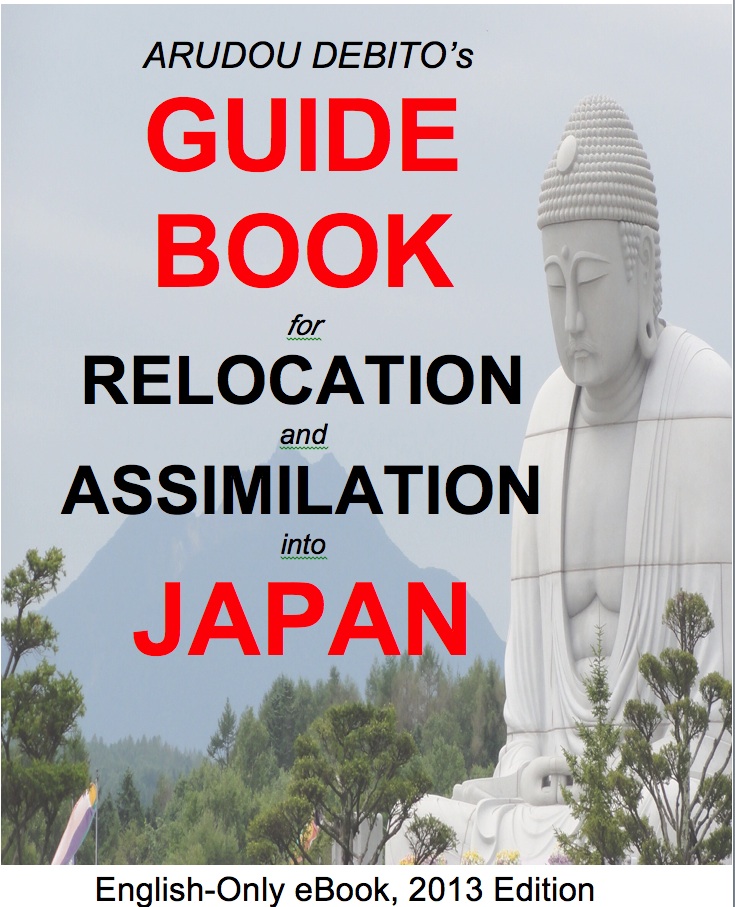
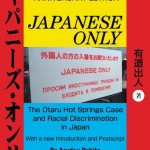
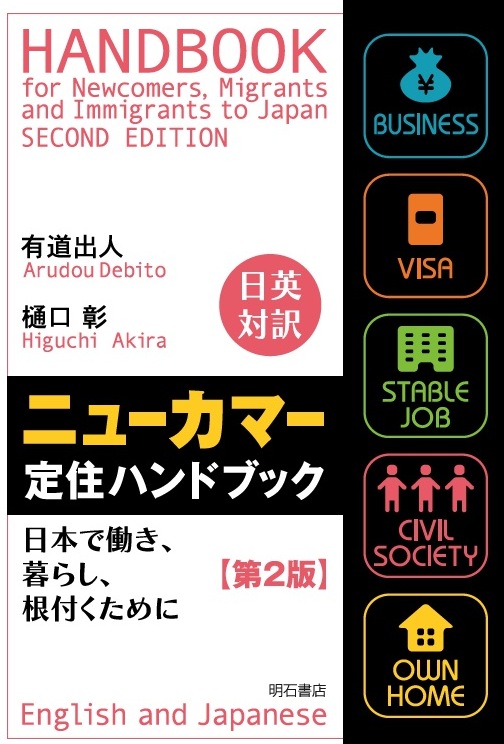
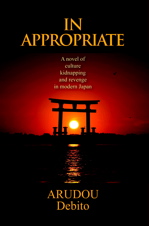

![]()



